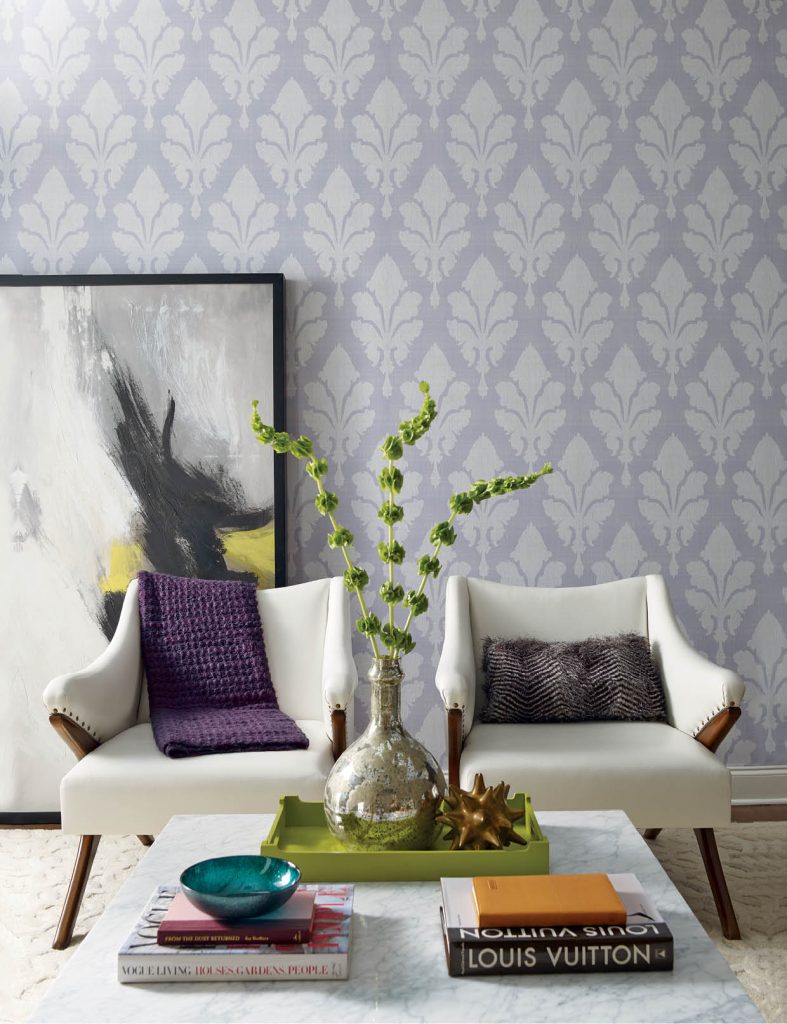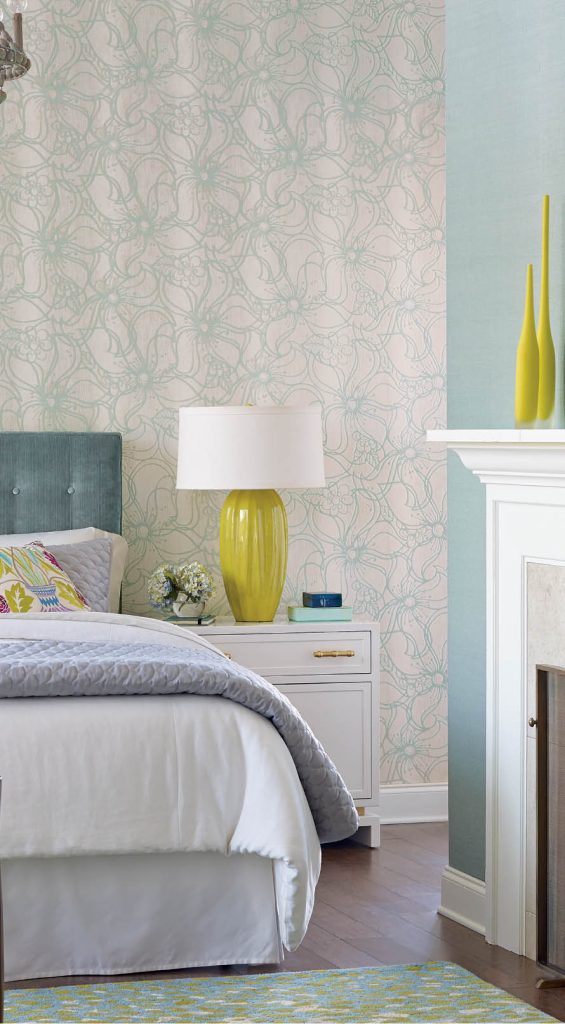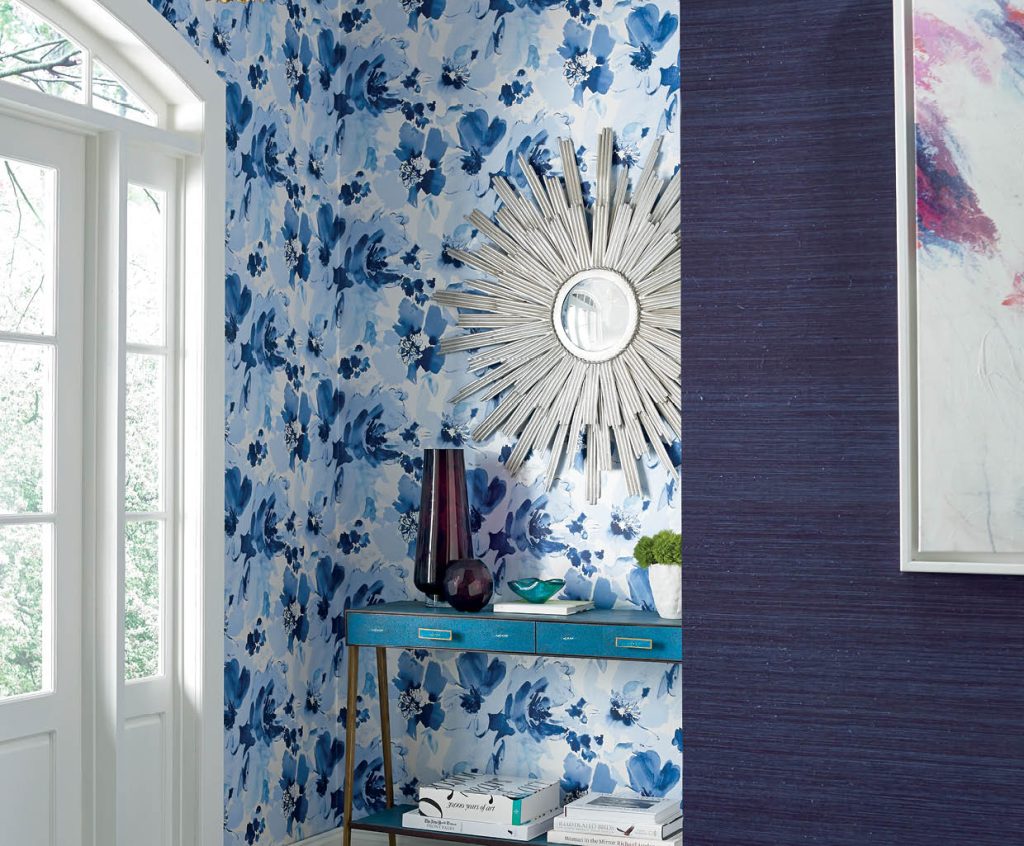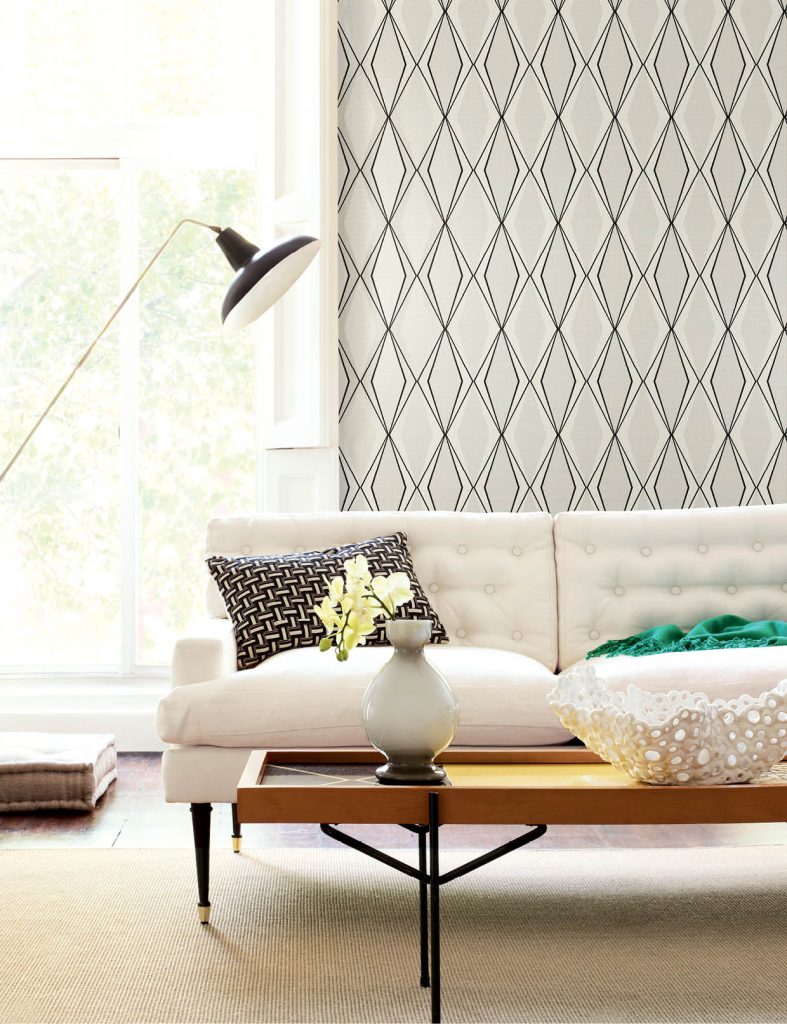Why Wallpaper? Why Now?
There’s no doubt we’re in the midst of a wallpaper revival. According to York Wallcoverings, consumer behavior patterns, style trends, and economic factors are all overlapping to create the current product rebirth.

The movement away from severely minimalist interiors has given way to a more fanciful, decorative and comfortable look, where pattern-layering and “rule-breaking” are actually encouraged. That, combined with advances in digital technology—both imaging and printing—brings a new design perspective and innovation to a highly traditional category.
The fast-and-furious construction boom of the 90s left us with a mix of open plan and boxy rooms lacking in architectural detail. In an effort to get out of the box, consumers have grown more confident about design and are willing to experiment, mixing styles and eras to create truly personalized interiors. They are using wallpaper to add structure, depth and character to cookie-cutter rooms.
Wallpaper Installation Tips courtesy of York Wallcoverings
Measure twice, cut once
The old adage applies in wallpaper projects big and small. The roll calculator on the package is a handy tool to help determine how much paper you’ll need for your project.
Apply universal wallcovering primer for ease of installation and long-lasting beauty
Primer is a protectant/sealer for your wall, which prevents the paste from absorbing into porous surfaces, and allows the paste to grip on slick surfaces. Sizing provides additional grip for better adherence and more slip for ease of sliding each strip into position on the wall. Many products on the market today are a combination sealer/sizer; these one-step “universal” wallcovering primers are easier to use and are formulated to work on a variety of surfaces under varying conditions. Sealing the surface is also an important procedure to allow for future removal.

Get the paper ready for installation by “booking” the paper
Depending on type, wallpaper can expand its width up to inch. To avoid expansion on the wall, which can cause bubbling and wrinkles, it is necessary to “book” the paper before hanging. “Booking” means rolling the paper onto itself for several minutes, “paste-to-paste,” to allow it to relax before applying to the wall. This allows the paper to fully expand, relaxing its curl.
Understand the match and pattern repeat
For smaller projects—framing panels, using wallpaper as art, lining cupboard backs, etc.—a pattern with a smaller repeat would be most practical while a larger repeat is well suited for larger surfaces and a more dramatic effect on a feature wall or in a powder room. The pattern match and repeat also affect the hanging method, the waste amount and the total amount of paper needed for a job. Generally speaking, the larger the repeat, the greater the chance for waste, but a drop match of the same repeat would have less waste than a straight match.
Managing corners, doors, windows and other obstacles
Tricks of the trade maybe, but you can do them too. And cutting out for doors and windows is key to making the finished job look professional. Resist the temptation to pre-cut strips. Hang paper normally allowing it to hang over the edge and then cut away the majority of extra paper leaving an edge of about an inch all the way around. Make small diagonal cuts on the corners to prevent tearing. Use the edge of the scraper to trim excess paper. When above or below the window frame, continue the pattern and make sure to hang smaller sections carefully for proper pattern matching and alignment.












